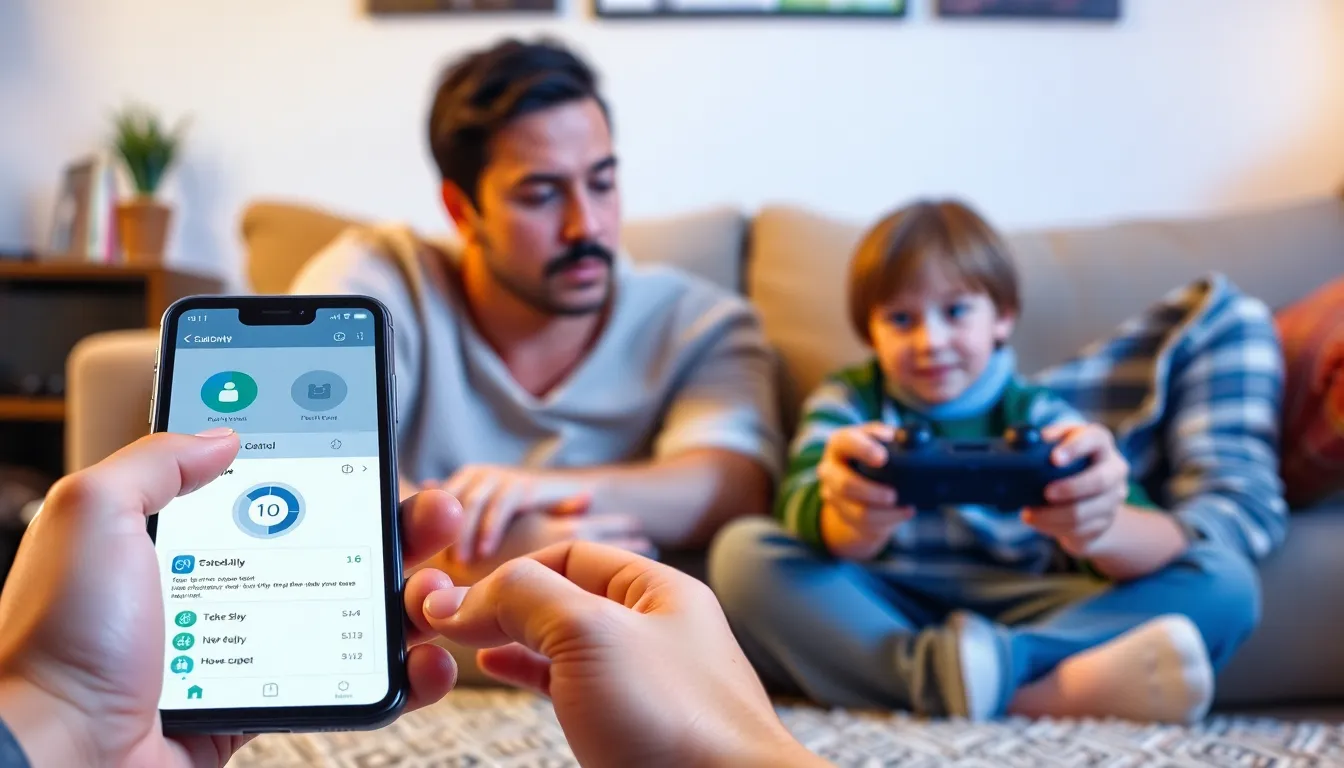Table of Contents
ToggleIn today’s digital playground, kids have access to a world of information—and not all of it’s suitable for their curious minds. As parents, it’s crucial to set up parental controls to keep those tiny explorers safe from the wild side of the internet. Think of it like putting a safety net under a trapeze artist; you want them to fly high but without the risk of a nasty fall.
Understanding Parental Controls
Parental controls serve as essential tools for managing children’s online activities. These controls enable parents to regulate access to specific content, applications, and features on various devices.
What Are Parental Controls?
Parental controls consist of software and features designed to restrict and monitor children’s internet usage. They allow users to block inappropriate websites, set time limits on device usage, and filter content based on age appropriateness. Various platforms, including computers, smartphones, and gaming consoles, often have built-in parental controls that parents can easily configure. Third-party applications also offer advanced functionalities, giving parents additional monitoring options.
Importance of Parental Controls
Implementing parental controls ensures a safer online experience for children. These controls prevent exposure to harmful content, such as violence or explicit materials. Statistics show that 70% of children encounter inappropriate content online before age 18. By utilizing parental controls, parents actively create a supervised digital environment. Monitoring screen time also promotes healthier online habits and encourages balanced tech use. Fostering open conversations about online safety and settings enhances children’s understanding of responsible internet behavior.
Types of Parental Controls

Parental controls come in various forms, each tailored to specific needs in managing children’s online activities.
Device-Based Controls
Device-based controls integrate directly into various electronic devices, offering tailored solutions for parents. Smartphones, tablets, and gaming consoles typically include built-in options that let parents restrict access to certain content. Many of these controls allow for age ratings, ensuring only appropriate apps and media are available. Additional features include screen time limits, which help manage how long children can interact with devices daily. Examples include iOS Screen Time and Android Family Link, both allowing granular control over device usage.
App and Software Options
App and software options provide robust alternatives for comprehensive monitoring. Numerous third-party applications enable parents to filter web content effectively and block applications deemed unsuitable. Popular choices include Net Nanny and Qustodio, which offer customizable settings for varying age groups. Tracking features also let parents monitor online activity, providing insights into browsing habits and app usage. Many of these solutions allow real-time notifications, keeping parents informed of potential risks as they arise.
Network-Level Controls
Network-level controls operate at the home network level, giving parents a broader oversight of connected devices. Routers equipped with parental control features allow filtering content accessible across all devices linked to the network. Tools like OpenDNS offer customizable filtering categories that can be adjusted as children grow. Blocking specific websites remains a critical function, protecting children from harmful content before they can access it. Many providers offer easy-to-use interfaces, making implementation straightforward for families.
How to Setup Parental Controls
Setting up parental controls helps create a safe online environment for children. Several options exist across different devices, ensuring tailored protection.
Setting Up on Smartphones
Most smartphones come equipped with built-in parental controls. For iOS devices, parents can access these features via Settings, selecting Screen Time to set content restrictions and app limits. Android users find options in the Digital Wellbeing section or Google Family Link. Each option allows parents to filter harmful content, limit screen time, and monitor app usage, providing comprehensive oversight of their child’s smartphone activities.
Configuring on Computers
Configuring parental controls on computers can involve several methods. Windows offers Family Safety settings, allowing users to manage app access, set screen time limits, and filter inappropriate content. Mac users can utilize Screen Time found in System Preferences for similar controls. Additionally, third-party software options offer advanced features such as detailed activity reports and web filtering, enhancing security and monitoring online behavior more effectively.
Implementing on Smart TVs and Consoles
Implementing parental controls on smart TVs and gaming consoles involves a few straightforward steps. Smart TVs typically provide privacy settings found in the main menu, allowing parents to set viewing restrictions by ratings. For gaming consoles like PlayStation and Xbox, parents can establish age restrictions, control online interactions, and limit game time through their console’s settings. Each platform enables users to protect children from unsuitable content while promoting responsible usage.
Best Practices for Using Parental Controls
Implementing parental controls requires ongoing attention. Regular monitoring ensures that controls remain effective and relevant as children grow. Examine settings frequently to adjust age restrictions and access permissions based on children’s maturity levels. Make note of specific apps and websites that are problematic, then modify settings accordingly. Engaging with children about their online experiences can provide valuable insights into their interests and needs.
Open communication forms the foundation of a safe online environment. Talking openly about internet safety fosters trust and knowledge. Children who understand the reasons behind parental controls are more likely to respect them. Encourage discussions on inappropriate content and healthy internet habits. Regularly ask children about their online activities, promoting a culture of transparency. This proactive approach helps parents stay informed while teaching children responsible behavior online.
Setting up parental controls is a crucial step in fostering a safe online environment for children. These tools not only help in monitoring and regulating internet usage but also empower parents to guide their kids toward responsible online behavior. By implementing the right controls and maintaining open communication, parents can ensure their children navigate the digital world safely. The ongoing adjustment of settings in response to a child’s growth and maturity further enhances this protective framework. Ultimately, a proactive approach to online safety lays the foundation for healthier digital habits and a more secure internet experience.







